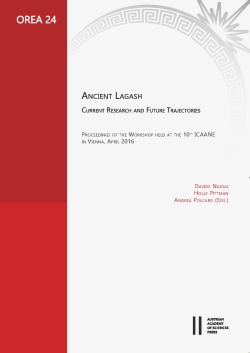
Ancient Lagash, pp. 123-144, 2022/12/27
Proceedings of the Workshop held at the 10th ICAANE in Vienna, April 2016
Elizabeth Carter surveyed Tell al-Hiba, the ancient city of Lagash, in the winter of 1984, systematically recording surface artifacts over the course of two months. Her results, published in preliminary form, presented an impressionistic overview of demographic and functional trends at Lagash across space and through time. As part of the ongoing Tell al-Hiba Publication Project, a revised ceramic typology was used to update the original field data and bring them into a Geographical Information System (GIS), to attain quantitative and spatial rigor with the survey material as well as produce thematic maps for presentation. This paper thus offers a robust model of spatial patterns of occupation at Lagash over the course of two millennia, with an emphasis on settlement expansion and contraction. Ultimately, it describes the original survey project and current digitization process, especially as it concerns intrasite spatial analysis and the use of spatial statistics to extract as much information as possible from the data. This study nuances understandings of early urbanism at al-Hiba while suggesting broader spatial and organizational phenomena within southern Mesopotamian cities during the Early Bronze Age.
Keywords: Lagash, Tell-al-Hiba Publication Project, archaeological survey, urbanism, GIS, intrasite spatial analysis, point pattern analysis, kernel density estimates